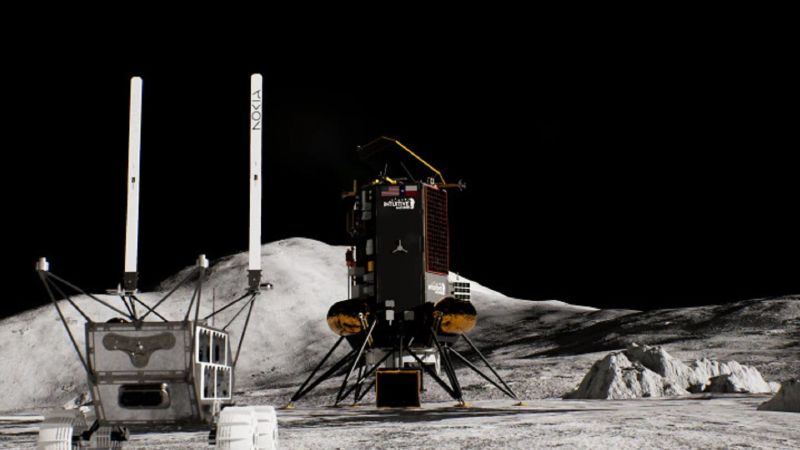NASA and Nokia have partnered to establish a cellular network on the Moon, with the goal of laying the groundwork for long-term human presence on other planets. A SpaceX rocket is set to launch carrying a 4G network to be installed at the Moon’s south pole, which will be controlled remotely from Earth. The primary challenge is creating space-qualified cellular equipment that can withstand the harsh lunar environment of extreme temperatures and radiation. The network unit is being built by Nokia’s Bell Labs using off-the-shelf components and will connect to roaming vehicles tasked with searching for ice on the Moon.
These vehicles, the Lunar Outpost rover and the Micro-Nova hopper, will explore specific areas on the Moon to locate ice that could be used for creating breathable oxygen and fuel for future Mars missions. The images of ice collected by these vehicles will be transmitted back to Earth via the cellular network in near real-time, a significant achievement in the exploration of the Moon. The ability to establish a communication network on the Moon is critical for NASA’s Artemis program, which aims to return astronauts to the moon this decade and requires high-resolution video and data transmission capabilities for sophisticated missions.
The partnership between NASA and Nokia under the Tipping Point initiative aims to develop technologies for future space missions and establish key roles in the future space economy. Bell Labs received a grant for this project in 2020, with Nokia being selected by DARPA to work on a communication services infrastructure for the lunar economy. The future lunar economy will rely heavily on communication technologies for data collection, information sharing, and operational control, enabling semi-permanent or permanent human presence on the Moon and facilitating various automated robotic operations.
In addition to the benefits for space exploration, there are potential commercial advantages for Earthly business ventures with a network that can withstand the harsh conditions of space. The compact and low-footprint network equipment developed for space missions could be utilized in remote deployments on Earth, such as industrial sites, public safety, emergency response, disaster recovery, or defense applications. The technology’s ability to endure extreme environments makes it suitable for harsh locations on Earth like polar ice caps, deserts, or offshore platforms, enhancing connectivity and communication capabilities in challenging scenarios.
The advancements in space-age technology have had a significant impact on various aspects of life on Earth. Innovations developed by NASA, such as the implantable biotelemetry transmitter used during the Apollo 11 mission and CMOS image sensors used in digital cameras, have revolutionized industries and everyday life. NASA’s research has led to breakthroughs in medical imaging, water purification systems, and even consumer products like freeze-dried food and memory foam mattresses. The collaboration between space agencies, private companies, and research institutions continues to drive progress in technology and innovation for both space exploration and terrestrial applications.
Overall, the establishment of a cellular network on the Moon by NASA and Nokia represents a significant milestone in the advancement of space technology and exploration. This partnership not only paves the way for long-term human presence on other planets but also offers commercial benefits and technological innovations that can improve life on Earth. The development of communication infrastructure for the lunar economy and the potential applications of space-age technology in remote environments on Earth demonstrate the wide-reaching impact of space research and exploration on society and industries worldwide.















